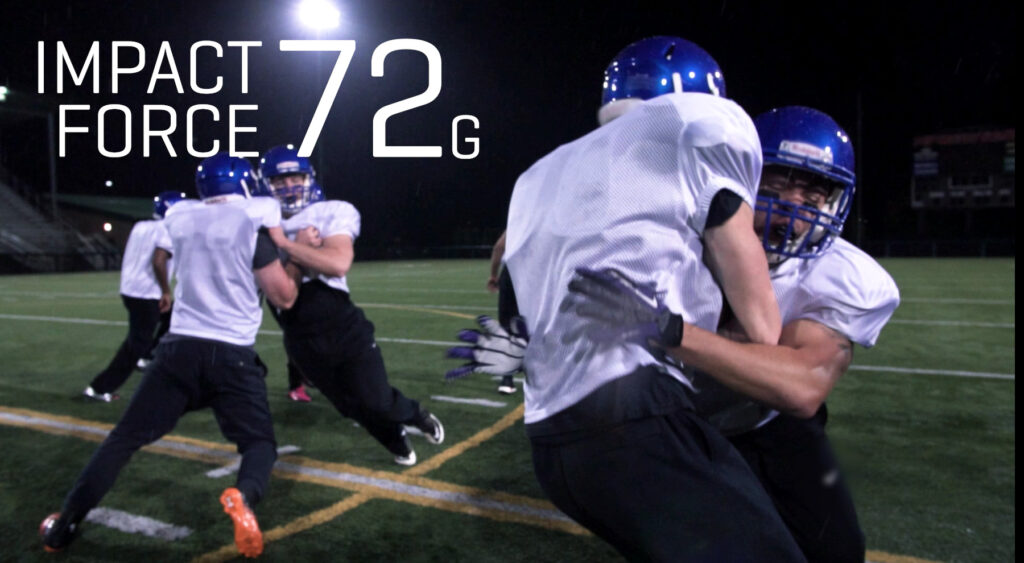5 Ways To Decrease The Risk Of Concussions In Youth Football

And How to Establish a Safe Environment for Every Youth Football Athlete
Injuries don’t care how old you are or what sport you play. So while there is no bias toward who sustains an injury and who doesn’t, Sports Organizations are challenged with the most important mission of all: Keep All Athletes safe. As part of our mission at Athlete Intelligence, we want to make sure our youngest Athletes are safe and protected through information every Coach and Parent should know. Having knowledge about how to prevent head injuries is a key part of ensuring a safe environment and game for children.
Here are 5 ways to decrease the risk of concussions in youth football:
1. CONCUSSION AWARENESS & EDUCATION
Across the country, growing attention to concussions has led to numerous efforts aimed at protecting athletes. Adequate knowledge can help athletes better recognize the signs or symptoms of a concussion and understand the consequences of not reporting head injuries. Some studies suggest athletes are unaware of certain symptoms and therefore do not self-report.
Every team should have a concussion management plan that details when a player should be removed from practice or competition. They should also give team physicians guidelines for evaluation before returning to play, and specify when an athlete who has shown signs of a concussion should not be allowed to return to play without a physician’s permission.
Reducing the risk of concussions starts with making sure all Coaches, Parents, and youth athletes are aware of the signs and symptoms of a concussion.
2. PROPER TACKLING TECHNIQUES
League officials should ensure that all coaches are committed to teaching proper tackling techniques and coaches across the country are adopting tackling methods that are meant to keep players’ heads away from the impact. There are currently two popular techniques teaching football players to keep their heads out of the game:
Heads-Up Football: Three years ago, USA Football, an organization started by the NFL, started offering training to youth coaches on a system of tackling meant to make the sport safer. Dubbed “Heads-Up Football,” it includes a series of drills that encourage players to make contact by rising into the ball carrier with their chests and shoulders, keeping their heads back.
Rugby Style Tackling: Also dubbed the “Hawks Tackle,” this technique has gained popularity in the last couple of years. It calls for the tackler to keep his head to the side while driving his shoulder into the thigh or chest of the opponent. The style emulates tackles made by rugby players and ex-Seahawks assistant head coach Rocky Seto says it is safer and more effective than traditional methods while still packing a wallop.
The idea makes sense – less contact to a young athletes head suggests the lower risk of concussion. All youth football programs should consider implementing safer tackling to remove an athletes head from contact.
3. PROPER FITTING HELMET
Team equipment managers should make sure when selecting a football helmet that players are inspecting and evaluating the helmet for proper fit. The Consumer Product Safety Commission (CPSC) recommends that the helmet should fit comfortably around the head without slanting back over the top of the head or drawn too low over the forehead and that the chin straps securely holds the helmet in place when a player runs or during impact.
Football players wearing poorly-fitted helmets, especially those with under-inflated air bladder liners, are at an increased risk of head injuries.
4. NEW TECHNOLOGY
Ultimately, to make the game of football safer for players, coaches and team management should consider implementing new product advancements allowing staff to be more informed when large hits occur and when specific athletes are putting themselves at more risk due to higher impact workloads. Sensors are beginning to make a rapid entrance into sports with technologies being able to track hydration, heart rate, muscle contusion, and most importantly, what’s happening to an individual’s head.
Research suggests we must limit the amount of head contact exposure youth athletes sustain and sensor technology is the most practical way to measure, monitor, and manage head contact exposure rates.
In many ways, sensors and new technology allow coaches and athletes to reveal the data you can’t see with your eyes. The more we understand about what’s going on in an athlete’s body, the more we can focus on changing behavior and eliminating activity leading to the risk of injury.
5. NECK STRENGTH
Recently, a growing number of research studies have shown that another important way to reduce the risk of sport-related concussions is to strengthen the neck. The theory behind it suggests stronger neck muscles will help cushion against and lessen the linear and rotational forces that can lead to a concussion.
Concussion experts Dr. Meehan and Dr. Cronin, who are featured in the in MomsTEAM’s PBS documentary, “The Smartest Team; Making High School Football Safer,” believe that the difference in small neck strength puts players at an increased risk of concussions.
Teams should consider basic neck strengthening exercises in an attempt to help young athletes begin to develop stronger necks.
Don’t forget that you can also improve safety and performance with the Athlete Intelligence Head-Impact Monitoring and Performance Tracking Platform. With advanced impact and performance metrics, our platform provides actionable data to help Teams improve technique and reduce the risk of head injury.
Want to Learn More about Athlete Intelligence? View our Information Booklet below: